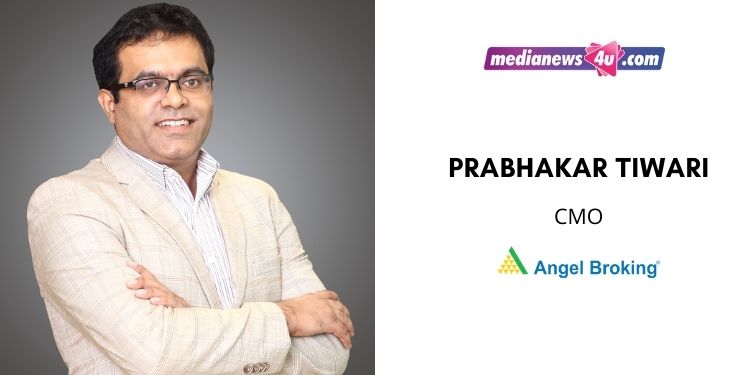Recently, Angel Broking Limited, a very well know broking firm in India went public with its IPO on the stock exchange. The initial public offer of equity shares was of face value of Rs 10 each which opening on 22nd September 2020 and closed on 24th September 2020. The price band of the Offer was fixed at Rs 305 to Rs 306 per Equity Share.
Angel Broking’s CMO, Prabhakar Tiwari spoke exclusively to Medianews4u on the journey of preparing for the big IPO of Angel Broking, in times of Covid-19. The conversation truly is a Masterclass on the marketing an IPO!
Read on.
How was the experience of launching the IPO for Angel Broking?
The IPO was a natural outcome of being in the business for more than two decades. It was our natural growth journey, where the brand is more valued and accepted in the financial community. The IPO process started with the DHRP that we filed with SEBI a year ago.
Once that was done and we got closer to thFe launch date, a lot more efforts were required such as to the meet local investors, institutional investors, mutual funds, insurance funds, private equity funds, and large hedge fund as well as international funds. We then have to present them a financial profile of the organization, which describes our competitive strengths, our turnover, the management policies, and so on. We also have to show them the consistent performance that the organization has maintained.
Some of them end up being the institutional investors, and they become your anchor investors. When you go public, whatever capital you want to raise from the market, some of it goes to the investor side as well. As institutional investors, they are far more equipped to understand the financial valuation of the organization such as ‘what is the scope for growth in future’ and other relevant factors.
The common population or investors also take a cue from these investors and invest. So, for us, it was a lot of hard work. It included the entire management team, financial team, investor relations team, and marketing team. Also, there are merchant bankers involved. We have our PR agency and the creative agency involved as well – so it is team work. And we are happy about how everything shaped up.
How did you manage to launch an IPO while working from home?
When the roadshows happen,we meet a lot of investors, who usually come to our office or we travel to their office. In this case COVID-19 could have been traveling with us from one office to another. This includes everyplace from mutual fund houses to insurance fund offices. But with this changing situation, wherein schedules became tighter and meetings were conducted using Zoom, things went smoothly. This enabled us to finish several meetings in a very productive environment at a faster pace.
What were some of the marketing strategies that you use to promote the IPO?
In terms of marketing strategy, IPO promotions are very different from the normal brand building or promoting a product, plan or a scheme. The entire focus is to talk about the financial prospects of an organization to the investor community.
One has to be basically governed by a variety of regulatory rules. You can do certain things and you cannot do certain things. Now, whatever value proposition you develop – whether it’s a corporate film or TVC or digital communication – all of those have to derive from your red herring prospectus documentation.
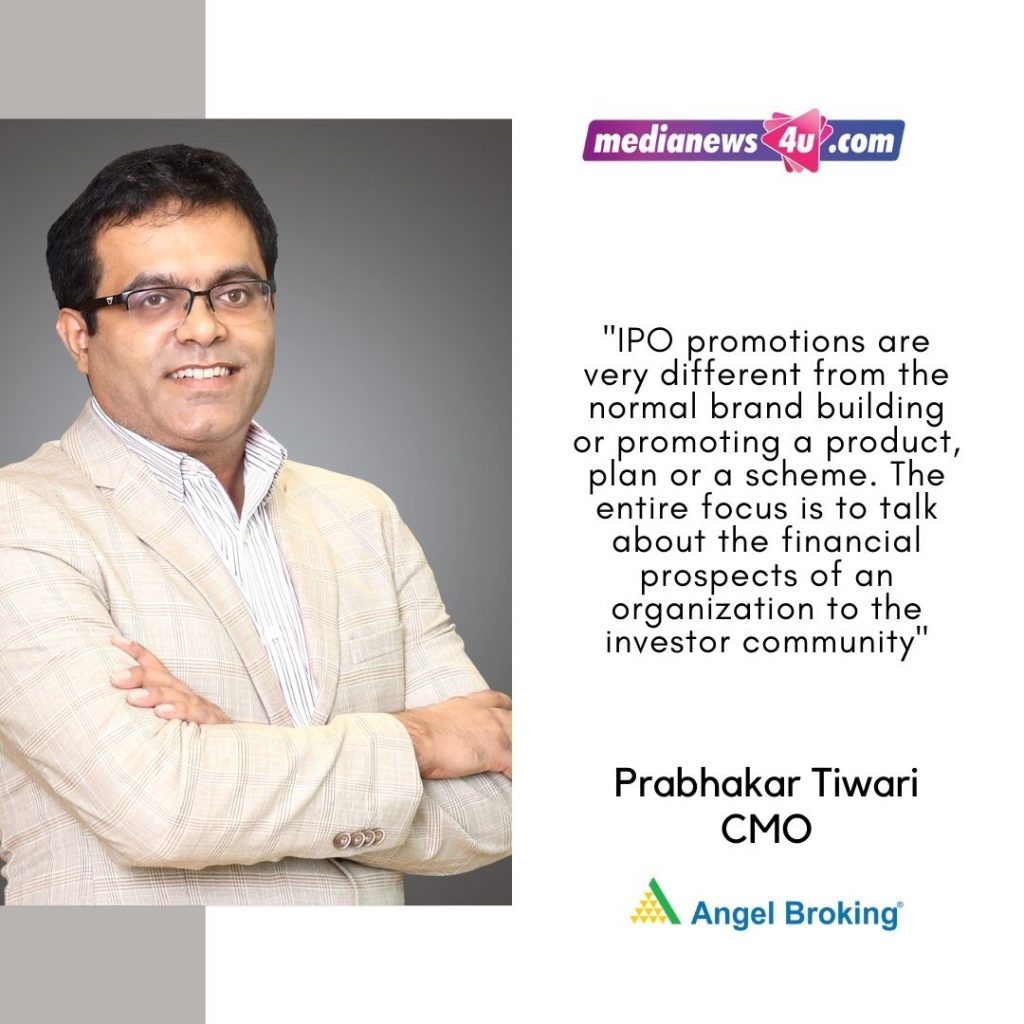
During IPO, the prospectus becomes a bible for you. Because somewhere every statement that you have there, you need to validate those. You have to keep supporting it. Red Herring Prospectus becomes the document which investor is evaluating your organization.
In terms of a marketing plan, we leverage the advantages offered by both digital and traditional mediums covering print, TV, and digital, and focus on reaching the customer in different ways.
You have to also come up with creative and informative corporate films and corporate TVCs. One tends to work on the specific strategy or conduct specific messages around the IPO open date, close date, and that prices as well as investor subscription is available correct.
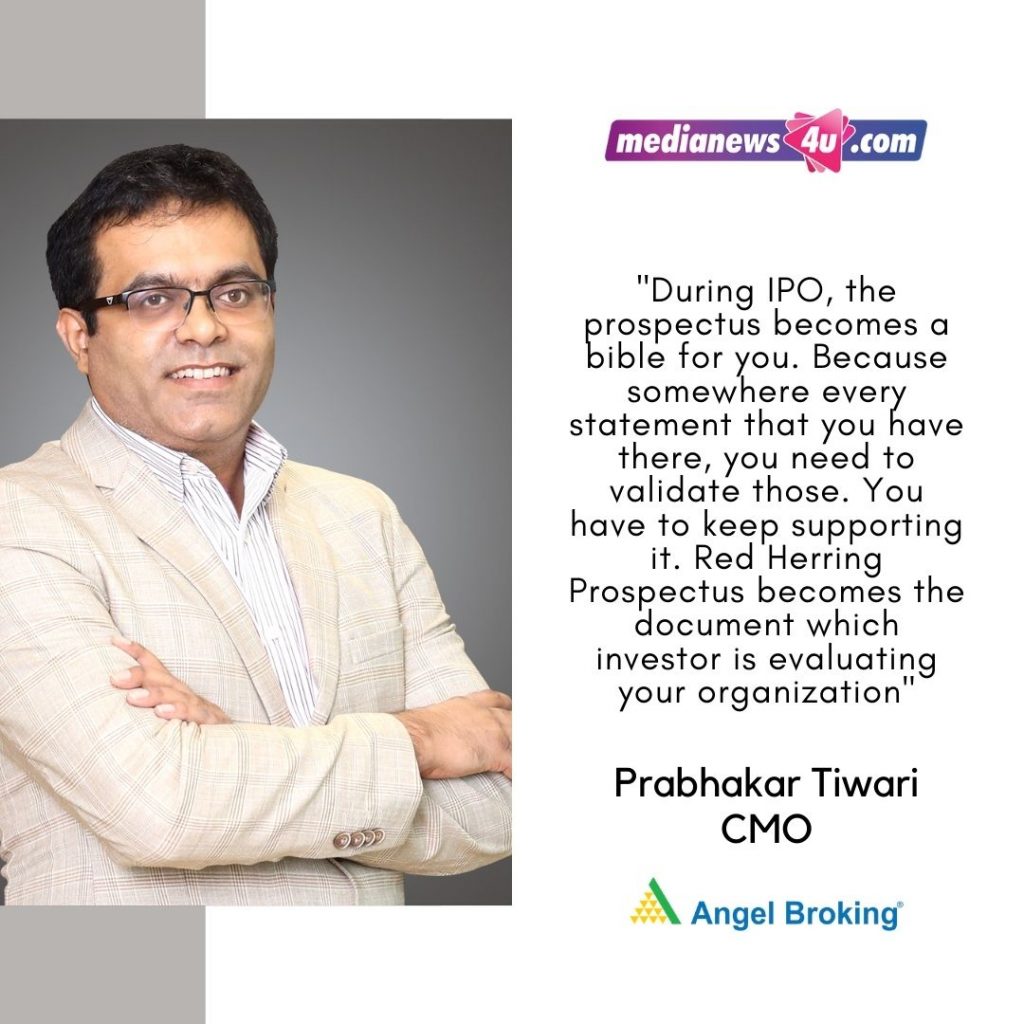
Also, for us, we know what was different as an organization than our regular marketing campaigns. We do not use print. However, we did so for IPO. The reason we have used print is that most of the IPO investors are traditionally from Gujarat and Rajasthan. The best way to reach this audience is through traditional media rather than leveraging the typical media.
In print as a medium, what happens is that you can get an immediate burst of reach. The burst of reach can only be given by print as a media. It not only helps in the corporate communication, but also for the IPO communication which is more about issue open date, issue close date, price band, etc. We have advertised on financial platforms like Moneycontrol, CNBC, and specific IPO-focused platforms such as Chittorgarh. Along with that, the country has continued to focus on influencer marketing.
What would be the demographics break-up of your target audience?
Audience segmentation would be tough call to make here. This is because, if you look at it, the target audience for an IPO comprises of the people who have money and have been investing in IPOs. It doesn’t matter whether they are 22-year-old or 42-year-old.
The fact is that we know that in regions like Gujarat and Rajasthan there is a large percentage of investing population, and they have a good reach to certain business newspapers. They also read regional newspapers and not just English newspaper. Similarly, we also understand today that a lot of millennials are investing in the stock market in large numbers. They’re also getting into newer things like IPO. Basically, buying and selling of stocks is one part, doing intra-day is one aspect, but IPO is a very different kind of phenomenon. In IPO you have a set of different people who participate just to get the distinct benefits of an IPO.
People buy an IPO because the price band is very reasonable. And then, if there is over-subscription, which reveals a hidden demand for the stock of that organization. After which comes the listing phase; which includes either the listing day, or, maybe, listing week or month, the stock will reach a certain height and those set of people will sell their stocks and book profit. There are some other segments of customers that invest in an organization during the IPO phase and remain invested for much longer. They fundamentally believe in that sector or the particular opportunity that the company is going after over the long term. Then, there are people who fall in between.
If you had to dive into the challenges that you face during this entire process of putting out your IPO, in terms of purely from a marketing perspective, then what will they be?
One is that your entire communication plan or your entire copy-headline has to be derived from the RHP or DRHP kind of document. This is one big challenge. Another aspect is that you have multiple stakeholders involved. So, you have to get all your advertisement checks from your PRLM, merchant bankers, from your legal advisor, your own team, and so forth. Then, of course, being a player in the stock market, we have to get approval from exchanges and other participants as well. There are multiple layers, a lot of complications, and a lot of to and fro.
There’s also a sense of urgency and push also. Other players are also conservative, because they have to protect their reputation. Managing those dynamics is challenging. This is another aspect of it.
Then, the IPO stage is a once in the lifetime event for an organization.
Mostly as a marketer, you have the history of last campaigns. So, there are some known thumb rules in terms of how a campaign would perform. However, in an IPO, there is no such playbook or past information available. In a way, you play blind. You can do benchmarking with other organizations, what they have done and what kind of results they got. You can talk to your network. You can also talk to some of the senior partners, who are a part of the process of IPO. But the fact is that it’s just once in a lifetime event. You either get it right or you don’t get it right. You can’t come back and correct it – as simple as that.
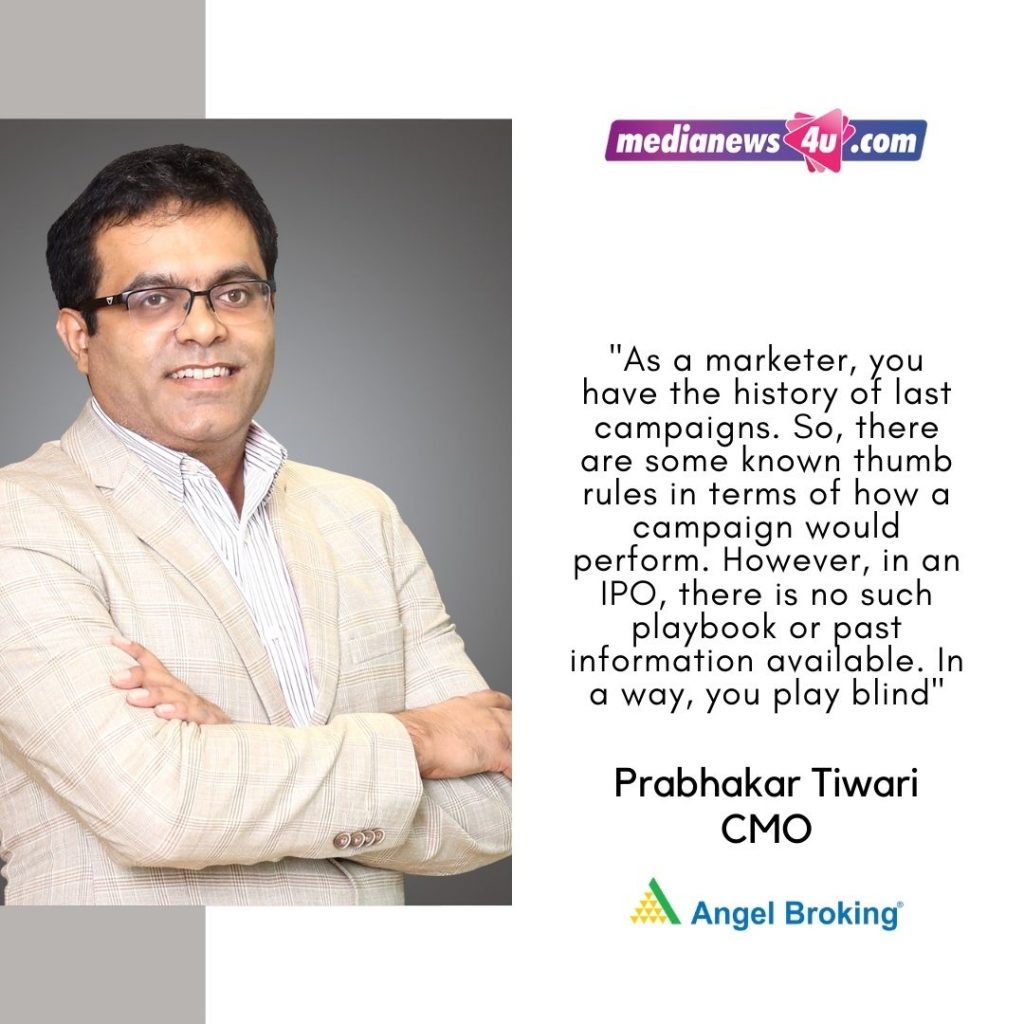
So the stakes are all high up there. The campaign is up and live and running on across all digital platforms?
The only thing is that Angel Broking is a new-age digital technology broker. That’s one important message that we have brought to the customers not just in our regular communication but also in this IPO. We have been a consistent player and have driven marketing campaigns in a multi-faceted way. We believe what we have to offer to our investors – that’s very solid and comprehensive. We look forward to how market reacts.
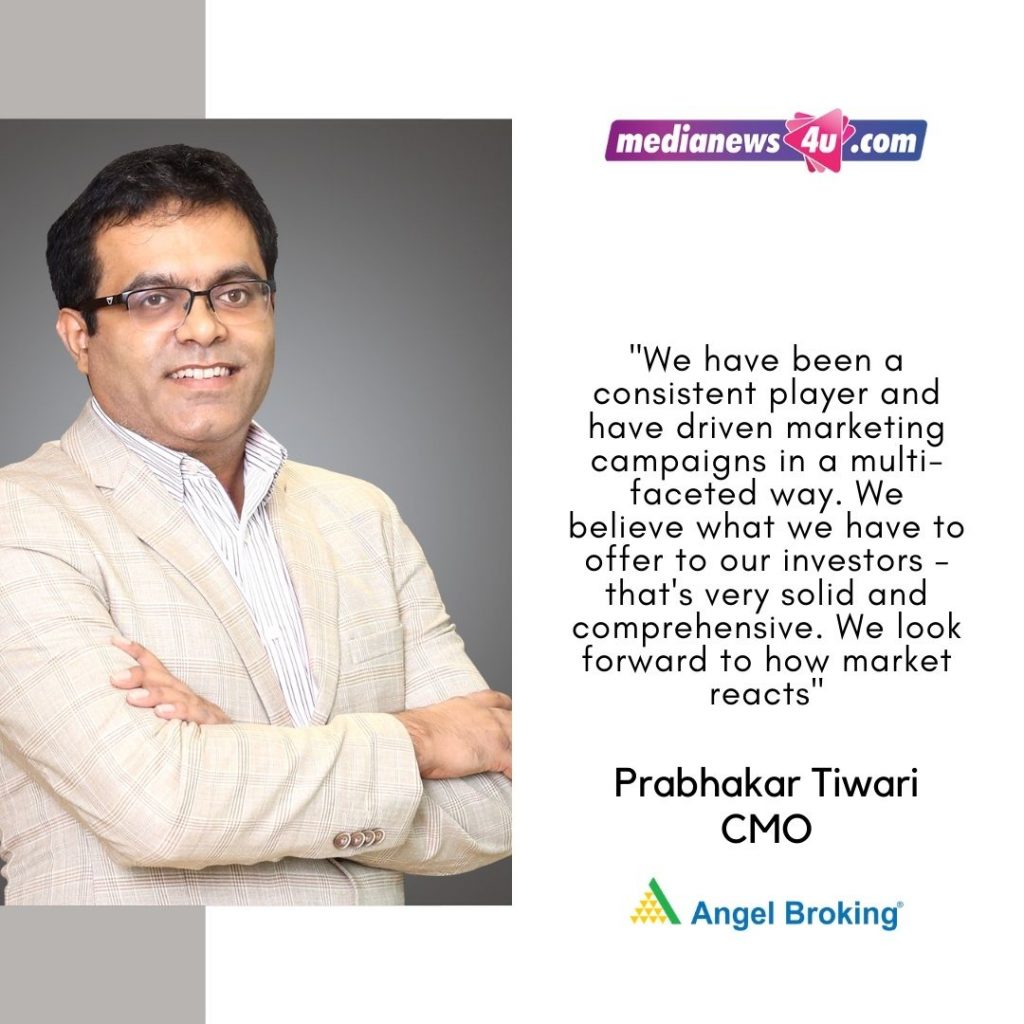
We want you to shed some light upon the expectation from the campaign or the entire IPO exercise from the marketing perspective and the amount of hard work that you and your team has put in.
My expectation is similar to what a management will have, which is that the people should consider our IPO offer in a very considerate way and take a call for long-term. I mean, whatever, we have to say about what makes us unique and what makes us very appealing, we have already communicated. One way in which we can measure the results is in the amount of subscription or over-subscription which the IPO issue will have. So, we look forward to that.
I hope we are able to kind of get over-subscription and create a demand for this amazing opportunity – which is the Angel Broking IPO.

